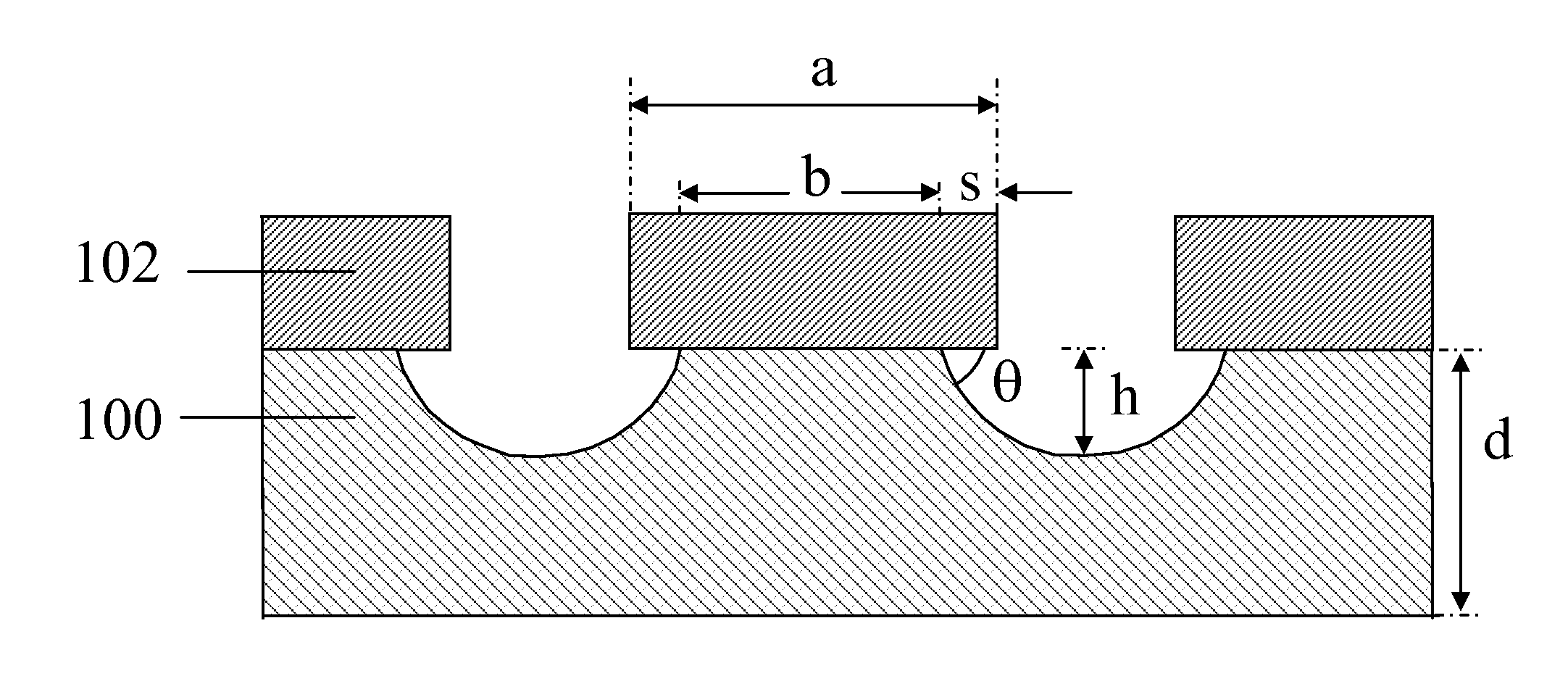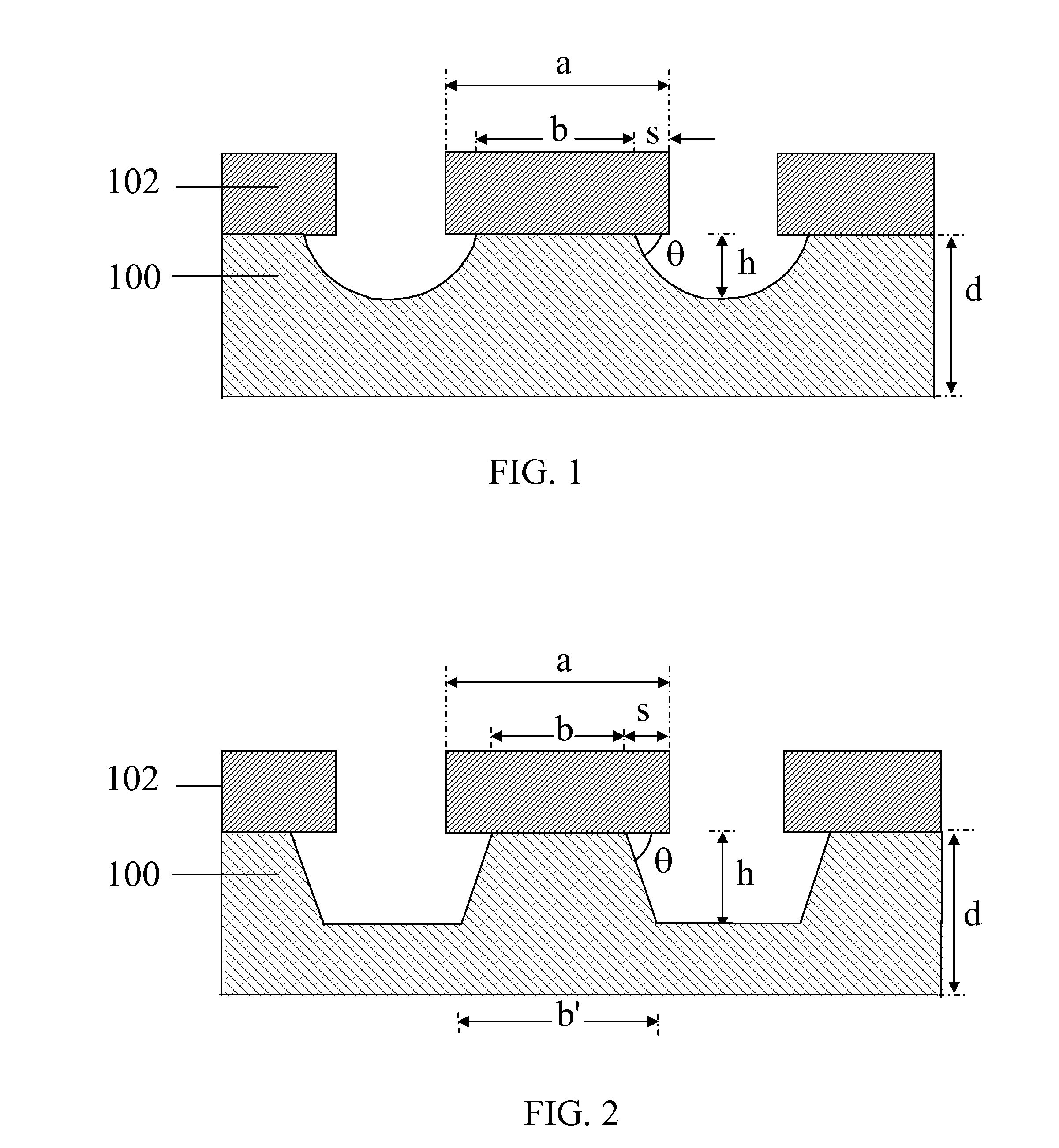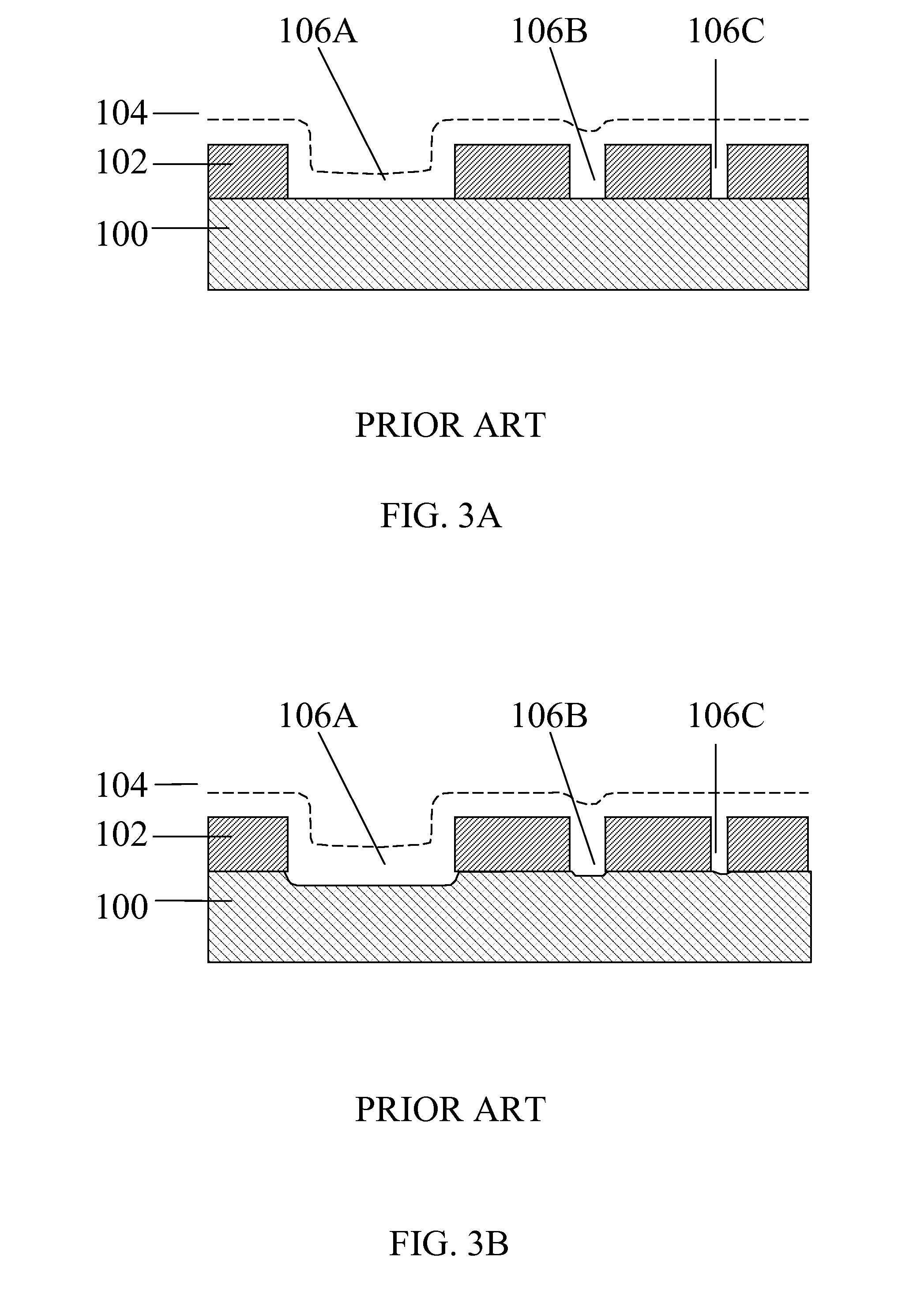Electrochemical etching and polishing of conductive substrates
a technology of electrochemical etching and substrate polishing, which is applied in the manufacture of electrolysis components, printed circuits, manufacturing tools, etc., can solve the problems of non-active” electrolyte solutions that do not provide chemical etching capability, and achieve the effect of minimising undercutting
- Summary
- Abstract
- Description
- Claims
- Application Information
AI Technical Summary
Benefits of technology
Problems solved by technology
Method used
Image
Examples
Embodiment Construction
[0048]The present invention provides a method for etching an exposed part of a metal substrate, specifically for the manufacture of devices having small features, such as fuel nozzles and stents and in the machining of cooling channels for thermal management in aerospace electronics. The method of the invention can be carried out using any suitable electrolytic etching apparatus. That apparatus includes a vessel which houses a counter electrode, which can be formed from any suitable electrode material such as titanium or platinum. In practice, the number of counter electrodes will be selected to facilitate achieving a uniform etching. The work piece to be treated is clamped in the vessel using a chuck in a position in which it is located opposite the counter electrode or counter electrodes. A power supply or rectifier completes a circuit whereby a net anodic electric current is delivered to the work piece, causing electrochemical etching of the exposed part of the metal layer, and a...
PUM
| Property | Measurement | Unit |
|---|---|---|
| Time | aaaaa | aaaaa |
| Time | aaaaa | aaaaa |
| Time | aaaaa | aaaaa |
Abstract
Description
Claims
Application Information
 Login to View More
Login to View More - R&D
- Intellectual Property
- Life Sciences
- Materials
- Tech Scout
- Unparalleled Data Quality
- Higher Quality Content
- 60% Fewer Hallucinations
Browse by: Latest US Patents, China's latest patents, Technical Efficacy Thesaurus, Application Domain, Technology Topic, Popular Technical Reports.
© 2025 PatSnap. All rights reserved.Legal|Privacy policy|Modern Slavery Act Transparency Statement|Sitemap|About US| Contact US: help@patsnap.com



